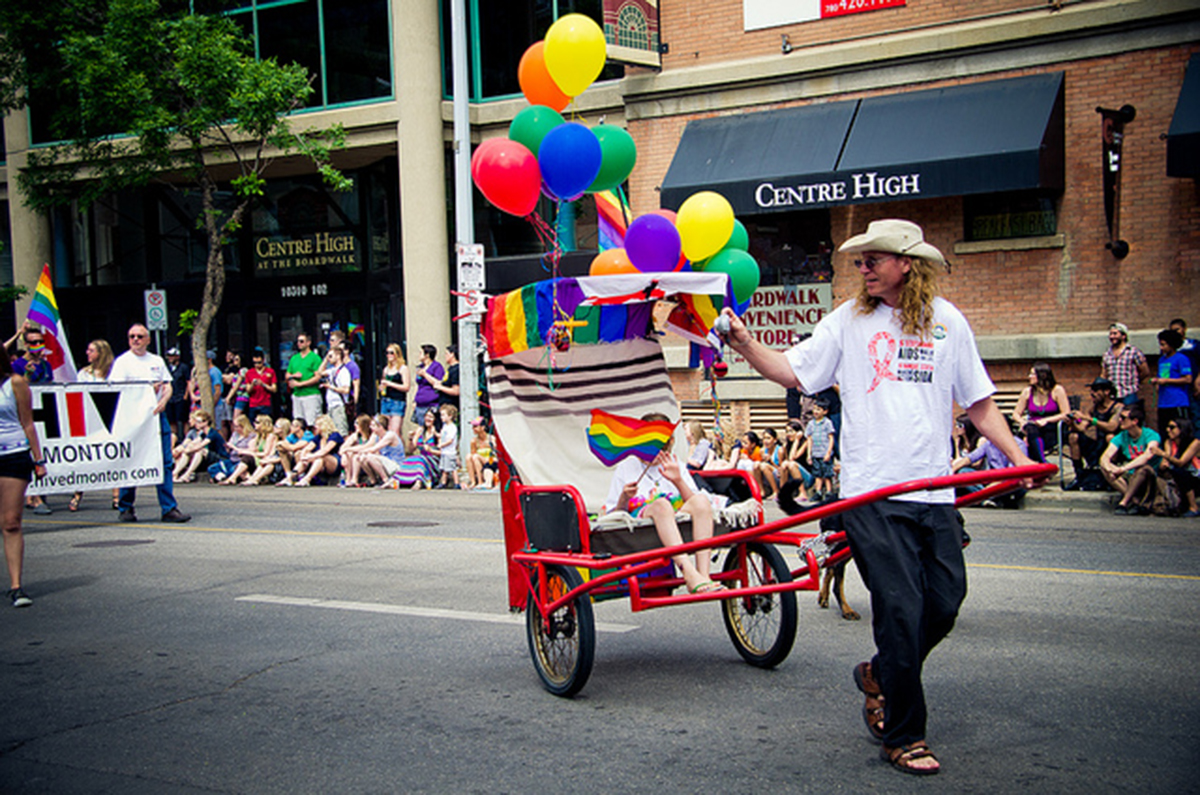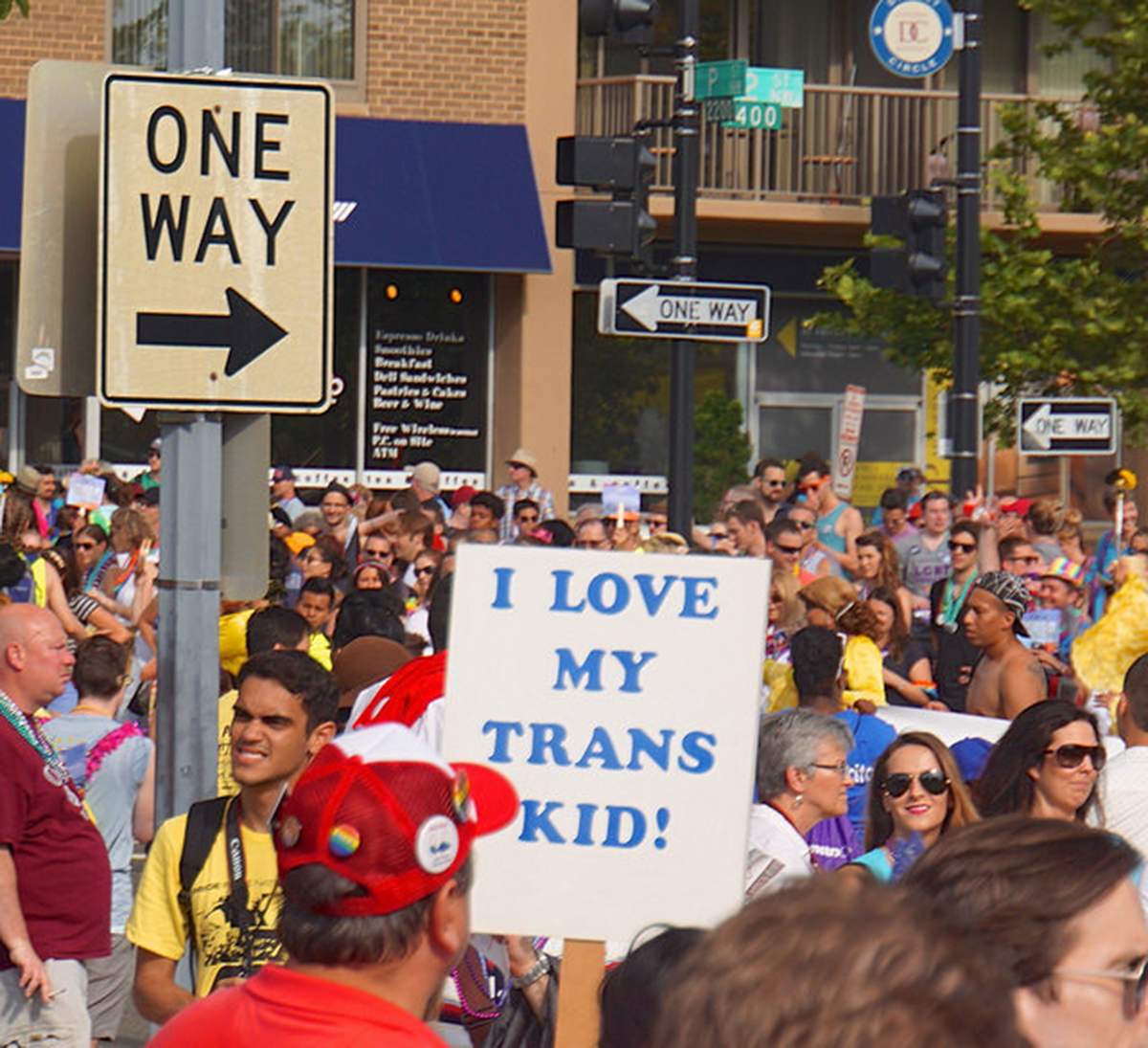Children typically have a stable idea of their own gender identity by an age that varies between two and four years. By this time, most children identify as the gender that matches their biological sex: children with male bodies regard themselves as boys, children with female bodies regard themselves as girls. However, some children identify as other genders than the one they’re assigned at birth.
When this happens in early childhood it’s a social problem: the child wants to use different bathrooms, clothing and social institutions than those mandated by its biological sex. That’s now becoming more possible as awareness of transgender issues spreads. But it’s made easier by the fact that there are few obvious physical differences between a 7-year-old male body and a 7-year-old female body. Come puberty, with its broad hips and shoulders, facial hair, menstruation, breaking voices, and breasts, trans children can have their first major encounters with truly crushing gender dysphoria — much as a cisgender person would feel if they were slowly turning into the opposite gender in their teens.

In transgender adults treatment takes three forms: psychotherapy, hormone treatment to establish an endocrine environment appropriate to the target gender and gender confirmation surgery — vaginoplasty or phalloplasty to create genitals appropriate to the target gender. In transgender teens, one option is to use puberty blockers, or anti-androgens. These prevent the biologically present sex organs from beginning puberty.
It’s a good idea at this point to talk about what puberty actually is. Aside from its social aspects it’s a biological process controlled by the pituitary gland. It comes in five stages, referred to as Tanner stages 1 through 5. Tanner 1 is basically birth through to the onset of puberty, while Tanner 2 is the beginning of puberty. As early as 8 or 9 in some people and as late as 16 in others, the pituitary gland triggers the release of luteinizing hormone (LH) and follicle stimulating hormone (FSH). These affect the testes in male bodies and the ovaries in female bodies, causing them to grow in size and then to release their characteristic hormones.
READ Understanding Childhood Gender Identity
The majority of the changes we associate with the differences between children and adults are a result of sex hormones released during puberty rather than with chromosomes: men’s larger heads and hands, women’s breasts and other characteristic curves, as well as men’s deeper voices and facial hair, are a result of sex hormone exposure. A body that isn’t exposed to sex hormones won’t enter physical puberty.
One is that hormone therapy for transitional puberty isn’t recommended before age 16. Most doctors agree with this and it’s the international consensus — one reason puberty blockers are used is to allow trans kids the time to grow sufficiently mature to be able to make a decision about physical transition, and even 16 is very young for such a choice. However, it’s worth remembering that some trans kids have been waiting for physical transition their entire lives and 16 feels like very old to them!
The Risks And Benefits Of Early Transition For Trans (?) Teens
While hormone therapy shouldn’t be introduced before age 16 it has been in some cases. Doctors like Dr Norman Spack, of a pediatric endocrinologist who is in favor of early transitions, has come under fire for his views. But he points out that early transition can be beneficial for children who are in “horrendous psychological shape.” Dr Spack isn’t alone — and others have gone further.
Dr Joanna Olson, medical director of the Transyouth Health Center at Children’s Hospital Los Angeles, says that she has been “skipping the blockers” and proceeding directly to hormone treatment in children as young as 12.

What does this mean?
One way to clarify the matter would be to look at trans kids. So far, we’ve been talking as though there was only one kind of trans kid. That’s a byproduct of the “marked other” effect. Gay people have a sexuality, straight people are just straight. Trans people have a gender identity, cis people just are. Women have a gender, men just are. It’s a deep-rooted and deceptive narrative and in this instance, it’s helping to obscure the fact that trans kids are as varied as trans adults — if not more so. People who are in some degree non-gender conforming, whose gender performance, gender identity or both doesn’t fit what society would expect of them based on their bodies, include butch lesbians, drag kings, drag queens, feminine straight men (like The Cure’s Robert Smith), cross-dressers, transvestites, feminine gay men and shades of genderqueer and androgyne identities as well as binary trans men and women.
Why should we expect to find anything else in kids?
Many of the little boys who insist on wearing a dress, or little girls who insist on short hair and boys’ names, will grow up to identify as cisgender men and women. Some of them will grow up to be cisgender but non-gender-conforming — butches, fembois, cross dressers and so forth. And we should be as OK with that as we are with them being trans, or cis. In a society that emphasizes binary gender roles we should also offer nongendered, differently gendered or genderqueer identities which children often won’t have encountered in everyday life.
Looked at in this light, the risks of puberty blockers — whose effects are reversible once treatment stops and pituitary gland activity restarts — need to be seen in more complex terms. The risks of using puberty blockers for a child who actually isn’t trans include a greater incidence of depression, anxiety and social withdrawal as they become more distant from their pubescent peers; allied with that is the danger that those non-trans kids will actually feel coercive pressure to assume a trans identity, and we should be as careful to avoid that as we would to avoid its opposite.
For trans children the risks associated with puberty blockers are far outweighed by the benefits. But for non-gender conforming kids or kids who aren’t sure, or whose gender identities aren’t totally stable, they could be both a mistake on their own and a part of a wider, deeper error.
READ Could My Child Be Transgender? Exploring The Signs And The Future
Puberty blockers should be prescribed only when a child is clearly trans and where there’s no massive psychological risk in delayed puberty — the majority of trans children fit that bill, but they’re a minority of children. Non-gender-conforming gender expressions aren’t enough to make you trans, especially as a child!
If you loved it, hated it or have a story to tell, get in touch in the comments section below!
- Washington Post: "Drug treatments for transgender kids pose difficult choices for parents, doctors." http://www.washingtonpost.com/drug-treatments-for-transgender-kids-pose-difficult-choices-for-parents-doctors/2012/05/19/gIQAxgakbU_story.html
- The Federalist: "What Parents Should Know About Giving Hormones To Trans Kids." http://thefederalist.com/2015/02/02/what-parents-should-know-about-giving-hormones-to-trans-kids/
- Photo courtesy of tedeytan: https://www.flickr.com/photos/taedc/18615922950/sizes/z/
- Photo courtesy of Kurayba: www.flickr.com/photos/kurt-b/5822946662/

